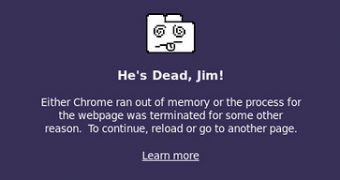As browsers and, indeed, operating systems become more and more connected to the internet, they're also becoming more vulnerable to the problems that affect web-based services, namely outages.
Google had a big problem yesterday, some changes to the infrastructure underpinning all of its services.
It was a major outage, but it was fixed relatively quickly. Yet the problem also affected Chrome, leading the browser to crash in many instances.
Normally, a browser is a stand-alone piece of software, the availability of a web service should not affect it or, at the very least, should not lead it to crash.
The cause of the problems in Chrome was the sync service, as you may have guessed. But it wasn't because it went down, Chrome is designed to deal with that.
Rather, the configuration problem that affected Google services lead to load balancing issues. The Chrome Sync servers rely on a Google wide quota service, which enforces how many requests the servers can make, to ease up the load on infrastructure if needed.
With the quota service down, the Chrome Sync service reverted to the default behavior, which is to limit communications as much as possible. The service sent out a notification the Chrome clients to throttle each type of data transfer.
However, some Chrome versions only support a subset of Sync features and crashed when they received instructions to throttle data transfers they did not understand.
The problem has been fixed, but it underlines one of the big issues with cloud computing, availability. Standalone apps can and obviously do crash, even entire operating systems go down.
When this happens, people realize it's their problem, even if they blame the browser or Windows. However, when a cloud service doesn't work, people get a lot angrier, partly because they see it as entirely someone else's problem and partly because they can't do anything about it.

 14 DAY TRIAL //
14 DAY TRIAL //